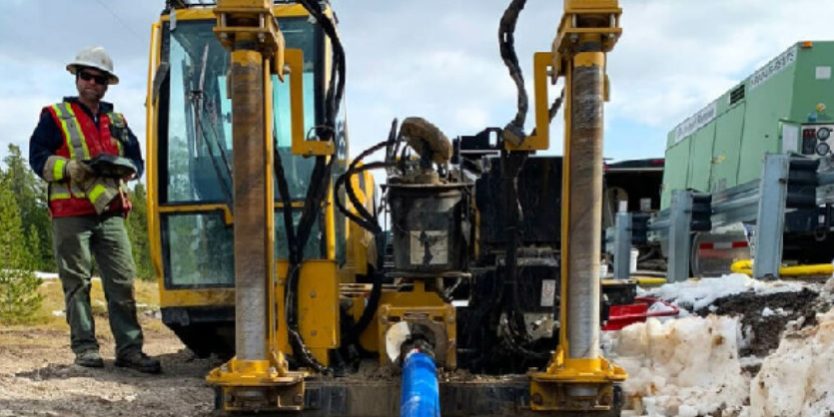Balancing the needs of human development with the preservation of our environment is a complex challenge, but it is one that we must confront with innovation, determination, and a commitment to future generations.
Thus, when it comes to accessing natural resources without impacting the environment, Horizontal Directional Drilling (HDD) is the correct approach. Keep reading this blog to learn how HDD can help you access natural resources in an environmentally friendly manner.
Why Use Horizontal Directional Drilling?
Unlike traditional drilling methods, HDD involves drilling a wellbore at an angle, often horizontally, to reach underground targets. This innovative technique offers a myriad of advantages, making it a preferred choice for various industries.
-
Minimal Surface Disturbances
One of the most significant advantages of HDD is its ability to minimise surface disturbance. Traditional excavation methods often require extensive trenching, which can disrupt landscapes, roadways, and existing infrastructure. HDD, however, allows for the installation of pipelines, cables, and utilities with minimal disruption to the surface above. This is particularly advantageous in urban areas, environmentally sensitive regions, and areas with restricted access.
-
Helps Protect Natural Habitats
In an era where environmental conservation is paramount, HDD stands out as an environmentally friendly option. By reducing the need for extensive excavation and minimising soil disturbance, HDD helps protect natural habitats, waterways, and ecosystems. Additionally, HDD minimises the risk of soil erosion, sedimentation, and contamination, preserving the integrity of the surrounding environment.
-
Protection of Waterways
Water bodies are often vulnerable to pollution and habitat disruption during construction activities. HDD offers a solution by allowing pipelines and utilities to be installed beneath rivers, streams, and wetlands without disturbing the surface or impacting aquatic ecosystems. This helps protect water quality, aquatic habitats, and sensitive riparian zones, ensuring the health and integrity of aquatic ecosystems.
-
Minimised Risk of Contamination
Traditional excavation methods can pose a risk of soil and groundwater contamination due to spills, leaks, and runoff from construction activities. HDD reduces this risk by minimising surface disturbance and the potential for accidental releases of pollutants. By keeping drilling operations underground, HDD helps prevent soil, groundwater, and surface water contamination, protecting both human health and the environment.
-
Rehabilitation and Restoration
After completion of HDD projects, the restoration and rehabilitation of surface areas are typically less extensive compared to traditional excavation methods. With minimal surface disturbance, there is less need for landscaping, revegetation, and erosion control measures. This not only reduces the use of resources and energy required for restoration but also accelerates the recovery of ecosystems and natural habitats.
-
Compliance with Environmental Regulations
In an era of increasing environmental awareness and regulation, HDD offers a compliant and sustainable solution for underground infrastructure development. Many environmental agencies and regulatory bodies recognise the benefits of HDD in reducing environmental impact and protecting natural resources. By choosing HDD, project owners can demonstrate their commitment to environmental stewardship and sustainability.
-
Lower Carbon Footprint
Horizontal Directional Drilling typically requires fewer heavy machinery and equipment operations on the surface compared to traditional excavation methods. This reduction in machinery use leads to lower fuel consumption and, consequently, fewer greenhouse gas emissions. By adopting HDD, projects can significantly decrease their carbon footprint, contributing to global efforts to combat climate change.
-
Enhanced Biodiversity Protection
Traditional trenching and excavation can disrupt local wildlife habitats, often leading to the displacement of species and long-term ecological damage. HDD minimises this impact by limiting surface disruption, allowing for the installation of infrastructure without significantly altering or destroying habitats. This protection of biodiversity is crucial in maintaining healthy ecosystems and supporting a wide range of plant and animal life.
Conclusion:
HDD drilling offers an innovative and environmentally friendly approach to accessing natural resources. By minimising surface disruption, preserving natural habitats, protecting waterways, and reducing carbon footprints, HDD allows us to meet our infrastructure needs while safeguarding the environment. Using HDD will help you achieve sustainable development and ensure a healthier planet for future generations.
To learn more about HDD and its benefits, contact us at 0408335532.






